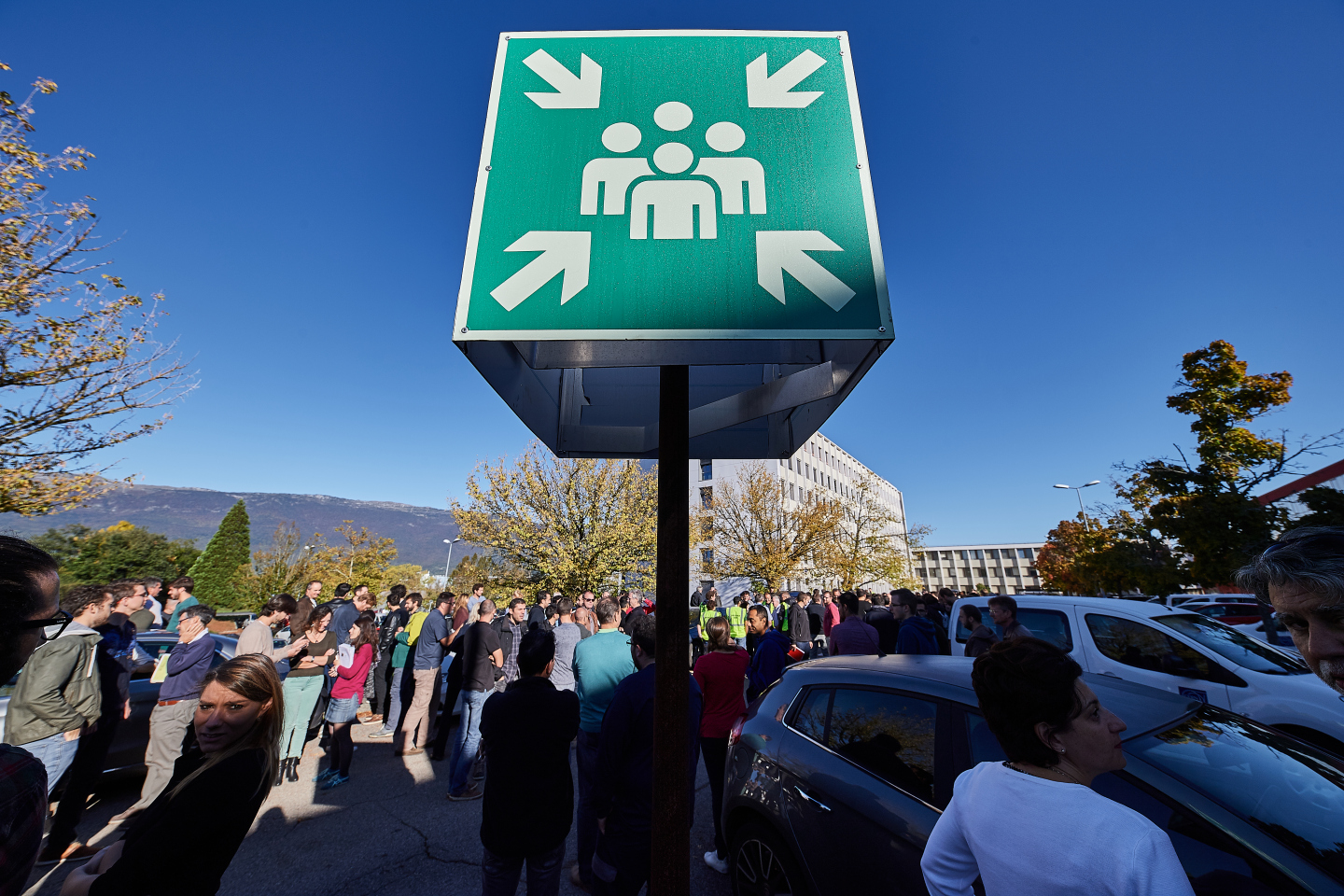On 5 October, at 10.00 a.m., the fire alarms in two of the biggest office buildings on CERN's Meyrin site – 30 and 112 – were set off for a fire drill. The safety procedure was organised by the Safety Offices of the Engineering and Technology departments, in collaboration with the CERN Fire Brigade.

"It took 12 minutes to complete all the required exercises – exiting the buildings, gathering at the nearest meeting point and calmly waiting for the Fire Brigade to arrive. This is a very good result given the fact that nearly 400 people work in the two buildings," said Simon Chérault, deputy safety officer of the Engineering department.

The exercise was carried out thanks to good coordination between the Territorial Safety Officers, the Emergency Guides and the Fire Brigade. “Evacuation drills allow us to test the working conditions and effectiveness of all fire and emergency equipment. They also strengthen the safety culture already adopted by the personnel. The feedback we receive from such exercises helps us implement continuous improvement of the safety measures at CERN,” explained Simon.
A high level of safety for all people on its sites is a key priority for CERN. Each year, fire drills are organised for around 20 different buildings. Recently, another type of safety exercise – a mock road accident – was organised by CERN in collaboration with the University Hospitals of Geneva (HUG).

